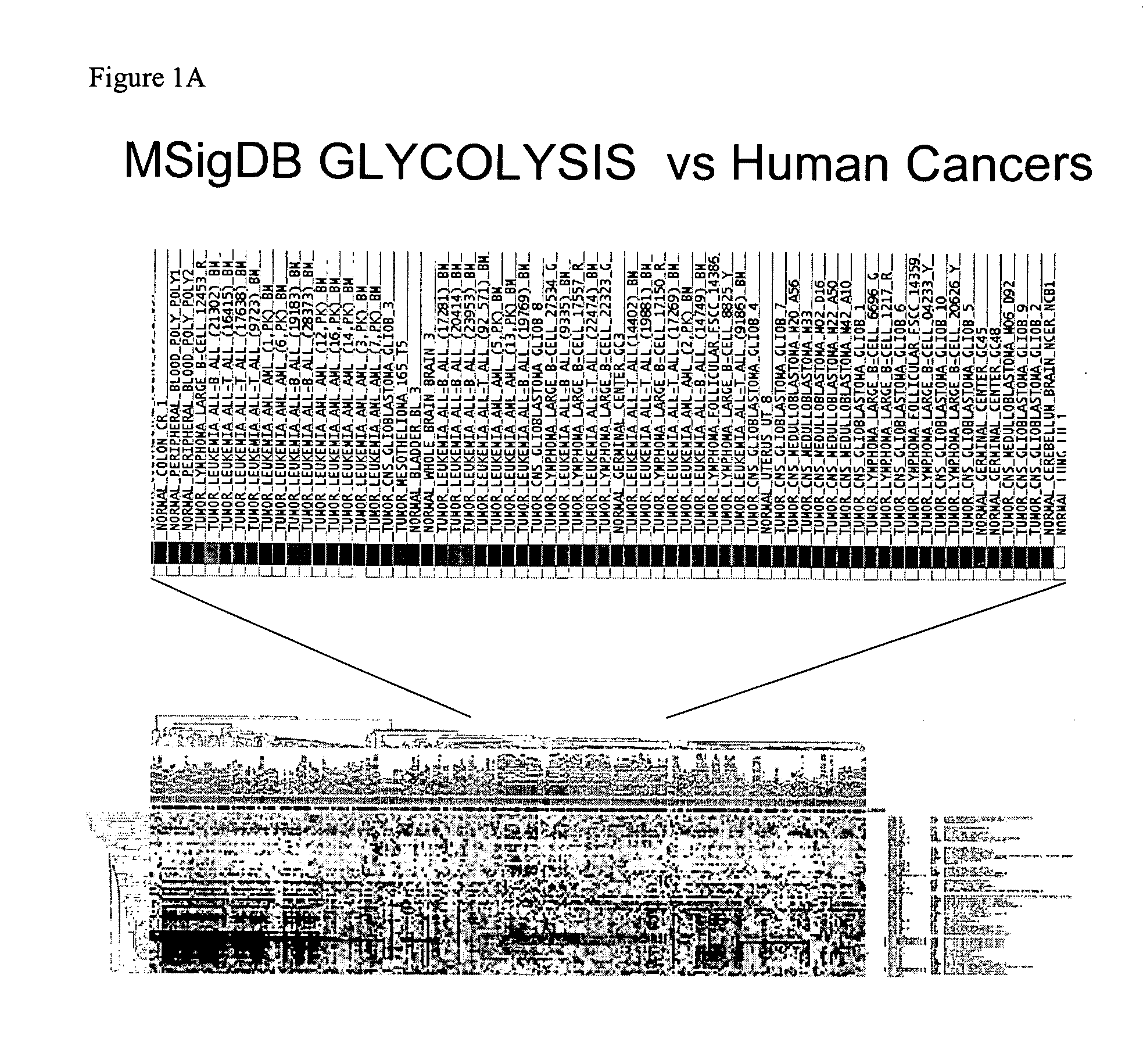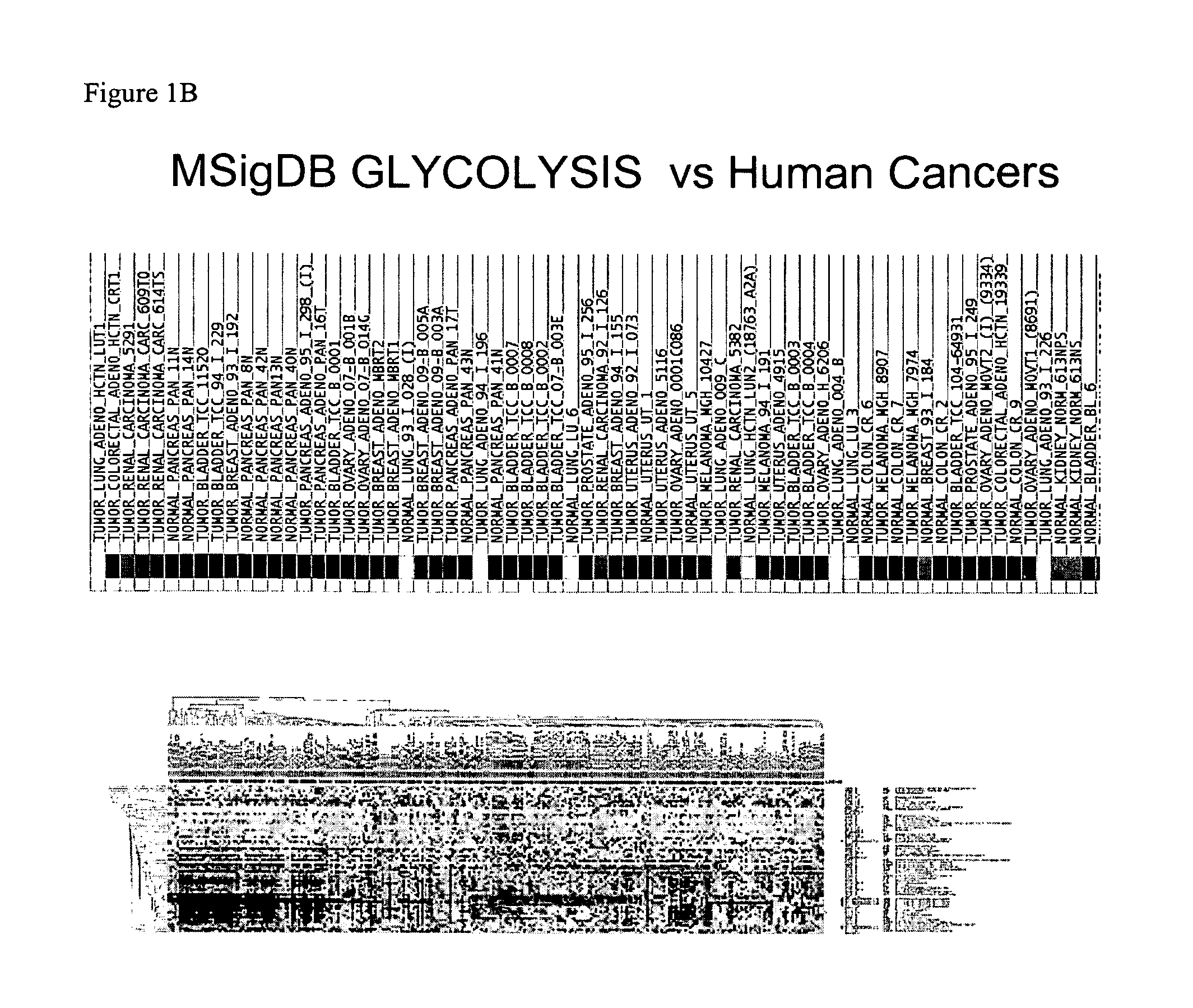Methods for treating neoplasia by inhibiting lactate dehydrogenase and/or nicotinamide phosphoribosyltransferase
a technology of nicotinamide and neoplasia, which is applied in the direction of biocide, heterocyclic compound active ingredients, drug compositions, etc., can solve the problems of inadequate conventional treatment methods and a small number of patients who cannot respond to this treatment regimen, and achieve low complexity, high sensitivity, and high volume throughput
- Summary
- Abstract
- Description
- Claims
- Application Information
AI Technical Summary
Benefits of technology
Problems solved by technology
Method used
Image
Examples
example 1
Reduction of LDHA Induced Oxidative Stress and Cell Death
[0356]To address the mechanisms of cell death following LDHA reduction by short interfering RNA (siLDHA), the effect of reduced LDHA expression on oxygen consumption by human P493 B lymphoid cells was analysed (FIGS. 5A and 5B). Reduction of LDHA favors the entry of pyruvate into mitochondria for oxidative phosphorylation, thereby enhancing oxygen consumption. Hence, LDHA expression was reduced by siRNA in P493 cells and a corresponding increase in oxygen consumption was observed (FIGS. 6A and 6B). Oxygen consumption was similarly increased in a human pancreatic cancer line treated with siLDHA (FIGS. 7A and 7B).
[0357]Enhanced oxygen consumption through reduction of LDHA levels is expected to increase the production of mitochondrial ROS, particularly since glycolysis, which diverts pyruvate to lactate, diminishes cellular oxidative stress (Brand and Hermfisse, 1997). Therefore, the production of ROS by 5-(and-6)-carboxy-2′,7′-d...
example 2
FX11 Inhibits Glycolysis and Alters Cellular Energy Metabolism
[0362]In addition to oxidative stress induced by inhibition of LDHA, it was determined how FX11 affects cellular energy metabolism. First, both FX11 and FK866 decreased mitochondrial membrane potential, and the combination accentuated the abnormality (FIG. 10A). In this regard, the combination of FX11 and FK866 was more toxic to P493 cells than either one alone, causing a more profound inhibition of cell proliferation (FIG. 10B). After 20 hours of exposure to FX11 or FK866, a decrease in ATP levels was accompanied by activation of AMP kinase (AMPK) (FIGS. 10C and 10D), suggesting that in addition to induction of oxidative stress, these agents also deplete cellular energy levels. Decreased ATP levels would further disable cell proliferation, particularly since many cancer cells depend on high levels of ATP production through aerobic glycolysis, in which LDHA recycles NADH back to NAD+. Because inhibition of LDHA decreased ...
example 3
FX11 Inhibits Cells that are Dependent on Glycolysis
[0363]It stands to reason that if FX11 targets LDHA, then cells that depend on LDHA for glycolysis would be more susceptible to FX11 inhibition than those that primarily utilize oxidative phosphorylation. In this regard, to determine whether metabolic phenotypes could affect sensitivity of cancer cells to FX11, the human RCC4 renal cell carcinoma cell line and the RCC4 cell line reconstituted with VHL (RCC4-VHL) were used. Loss of VHL in RCC4 renders these cells constitutively glycolytic due to the stabilization and expression of HIF-1 and HIF-2. Reconstitution with VHL resulted in degradation of HIF-1α and HIF-2α and increased mitochondrial biogenesis and oxygen consumption (Zhang et al., 2007). Given the metabolic differences in these isogenic cell lines, a more significant influence of FX11 on the RCC4 cells was expected as compared with the RCC4-VHL cells. Indeed, a dose-response study revealed that RCC4 was more sensitive to F...
PUM
| Property | Measurement | Unit |
|---|---|---|
| Inhibition | aaaaa | aaaaa |
Abstract
Description
Claims
Application Information
 Login to View More
Login to View More - R&D
- Intellectual Property
- Life Sciences
- Materials
- Tech Scout
- Unparalleled Data Quality
- Higher Quality Content
- 60% Fewer Hallucinations
Browse by: Latest US Patents, China's latest patents, Technical Efficacy Thesaurus, Application Domain, Technology Topic, Popular Technical Reports.
© 2025 PatSnap. All rights reserved.Legal|Privacy policy|Modern Slavery Act Transparency Statement|Sitemap|About US| Contact US: help@patsnap.com



